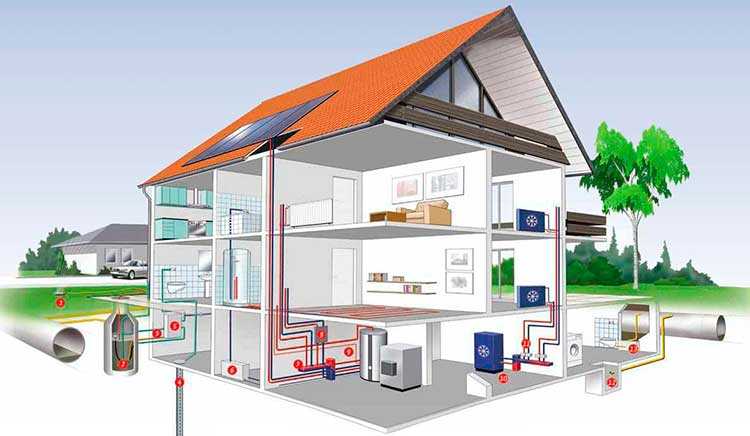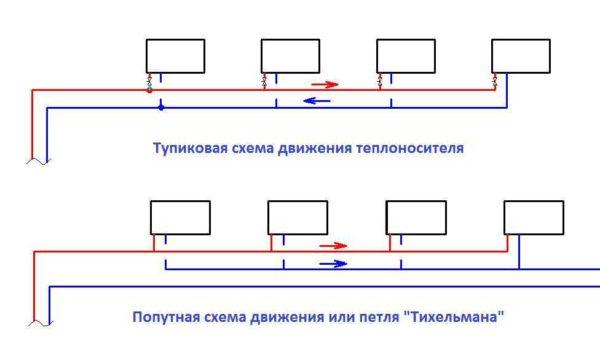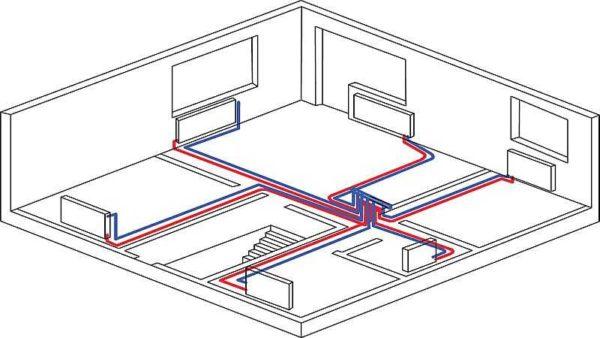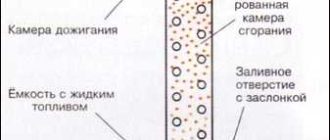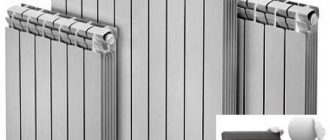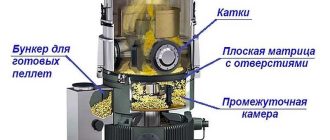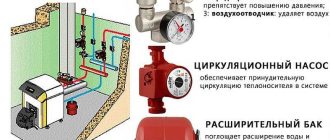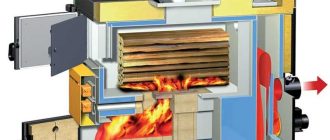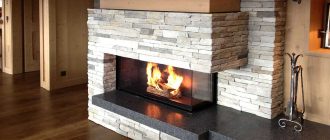In our country it is unlikely to survive without heating – the winters are too harsh. If apartment owners do not have to choose – what they have, they warm themselves with, the heating system of a private house is a personal matter for its owner. Choose the option that suits you best.
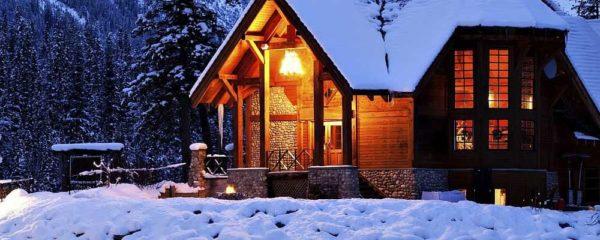
記事の内容
Types of heating systems
In a private home can be realized almost any heating system and their combinations. To choose the right type of heating, you need to know all their features, advantages and disadvantages.
Stove heating
A century ago, this is how most homes – large and not so large – were heated. It was just a stove without any additional elements. One or several – it depended on the size of the house and the capabilities of the owners. In huts there was usually a large Russian stove, in the houses of intellectuals and nobility – more refined Dutch or Swedish.
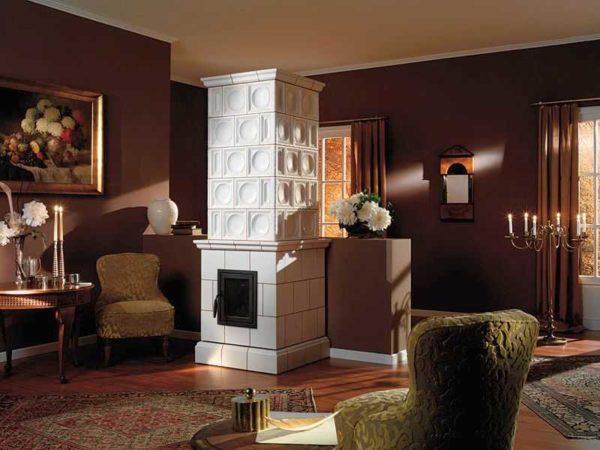
Furnace heating is still used today, but mostly in dachas, as a temporary solution to raise the temperature in the room or as an alternative source of heat. You can find stove heating in village houses, but it is rare.
Stove heating is losing popularity, so it is characterized by cyclicality: flooded – hot, burned – cold. It is very inconvenient. The second serious disadvantage is the inability to regulate the temperature. The intensity of burning can be changed within some limits with the help of vyushkas, but not cardinally: if the wood is burning, it emits a certain amount of heat. Its release a little can be “stretched” by limiting the air supply, but only a little.
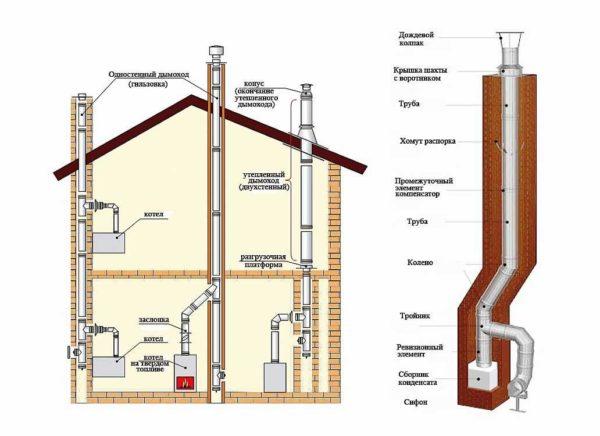
The third disadvantage is the uneven distribution of heat. Warm those rooms in which the sides of the furnace go out, and even then, the floor remains cold. In addition, even in heated rooms near the furnace is warm, at the far end of the room can be even cold. The fourth disadvantage – the need for constant maintenance – for a long time it will not be abandoned. You have to be constantly (or almost) near the furnace: to keep burning, clean and flood it again. All these reasons and led to the fact that the furnace in a private house usually appears as one of the possible sources of heat and is rarely the main.
Water
The most common in our country heating system – water and if they say that they want to make heating a private house with their own hands, 98% have in mind just such a system. And this is despite the fact that it is expensive to install. This is probably the most expensive to install the system. But it has a decent number of pluses, which is the reason for its popularity.
It consists of a hot water boiler, piping and heating devices – radiators – through which the coolant circulates. Most often it is water, but can be a special non-freezing liquid. All the complexity in the creation of this very system of pipelines – it is necessary to ensure the transfer of heat in the required amount.
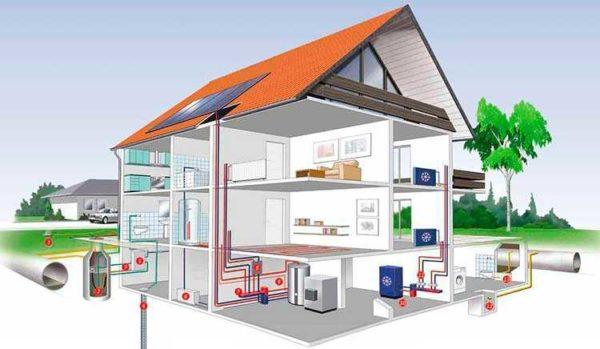
The first positive point – the system can work in both cyclic and constant mode. It depends on the choice of boiler. If the source of heat for such a system is a conventional solid fuel boiler (wood or coal), then the cycle is present. To practically nullify it, the system adds a heat accumulator – a large reservoir of coolant, in which the heat during the period of intensive heating is accumulated. And at night, when the boiler burns out, the accumulated heat maintains a comfortable temperature in the house.
If there is any other boiler in the system – gas, liquid fuel, pellet – there is no cyclicality. Once the system has reached operating temperature, it is maintained with a fairly small difference (with proper capacity calculation and design).
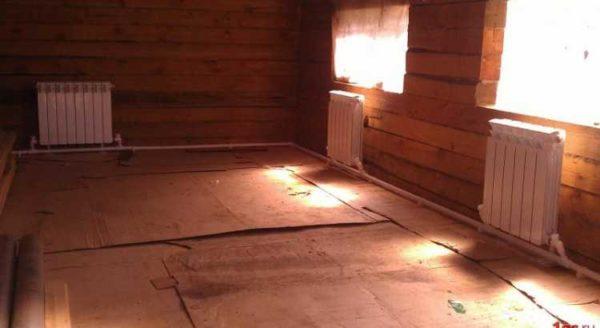
The second positive point: most of the modern heating boilers are equipped with automation, which directs their work and monitors safety. Such systems can work for quite a long time without human intervention (except for solid fuel). The third plus – requires infrequent maintenance.
Therefore, in most cases, heating in a private house and make water. Sometimes owners do not even think about the possibility of any other system.
Air
The center of the air heating system is also a source of heat, and usually it is a boiler, only it heats not water, as in the water system, but air. The heat source can be a powerful convector, working on gas, electricity or liquid fuel.
In order for the heated air to reach other rooms, a system of ducts leads from the heat source. Air movement through them can be natural (gravity systems) and forced (with fans).
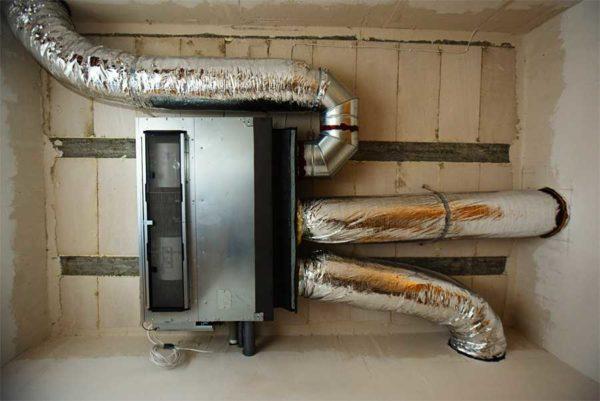
Compared to water heating, much less money is required. In small houses – for one or two rooms (usually dachas) – one heat generator without ducts is enough. In this case, the warm air enters the other room through open doors, warming it up as well.
The disadvantages here are obvious: while the heat generator is working – warm, stopped – immediately became cold. No thermal inertia, as in a water system (while the water cools down in the house is warm). The second point – drying air. He and other types of heating dries out, but air heating of private homes, perhaps the leader in this regard.
Electric
Heating a private house with electricity is one of the simplest in the device. Only buy convectors and hang them in key places. You can under the windows, you can – under the ceiling. Both systems work. The disadvantage of these systems is that they cost a lot of money to maintain a stable temperature.
The system consists of a number of convectors that are able to compensate for heat loss. In this case, there are no complications at all, except for wiring of a suitable cross-section and allocation of the power required for heating. The convector has a heating element through which the air flow moves. Passing along the heated element, the air is heated, spreading heat throughout the room.
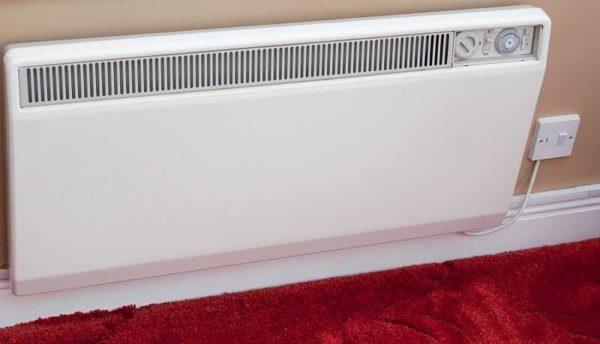
Air movement in the convector is organized in two ways: with the help of a fan or without it, due to natural processes. More effective heating with forced air movement. But such power is not always needed (and fans create noise), so many models have two modes of operation – with a fan and without.
This type of heating is quite comfortable – modern convectors can maintain the set temperature with an accuracy of up to two degrees. Their work is guided by automation, which turns them on and off as needed. In the presence of power supply, they do not require any maintenance.
The disadvantage is that active convection (air movement) carries a lot of dust. The second disadvantage is over-drying of the air, but this is a disadvantage of all heating systems. If an ordinary spiral is used as a heating element, it burns out the oxygen in the air (heats up to a red glow). But such elements are now used only in the cheapest small floor models. More serious equipment warms the air with ceramic heaters, which do not burn oxygen (almost).
There is also such a system as a warm floor, but this is a separate topic and described water warm floors here, and electric – in this article.
What system to choose
Actually the type of heating of a private house depends on the climate and the mode of use of the premises. In most countries with mild winters use electric heating or air heating. In our country, however, in most of the territories water heating is used. Such a complex system makes sense to build in houses with permanent residence. Then such material investments are justified.
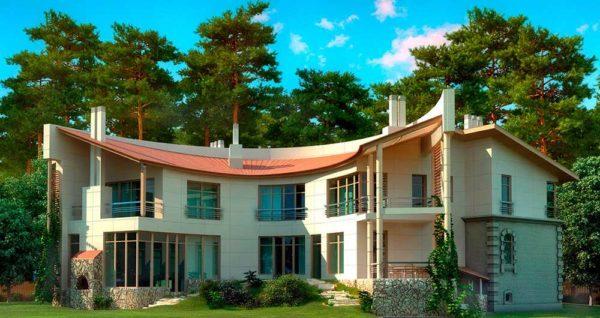
If you choose a heating system for a summer cottage, where in winter you will appear only on visits and do not plan to maintain a plus temperature, the best option – air heating. With or without ducts – it already depends on the size of the dacha. Why not electric? Because in winter the supply of electricity in rural areas is extremely unstable. So it is better to have a stove like Bulerian.
Types of water heating systems
Since water heating of a private house is put in most cases, consider what types it is. There are quite significant differences.
According to the method of circulation of the coolant
There are water heating of two types: with natural and forced circulation. Systems with natural circulation use a well-known physical phenomenon: warmer liquids rise to the top, colder liquids go down. Since the system is closed, a circulation is formed.
The advantages of such a system are that it is energy independent, i.e. no electricity is required for its operation. This is important in many rural areas where winter power outages are the norm rather than the exception.
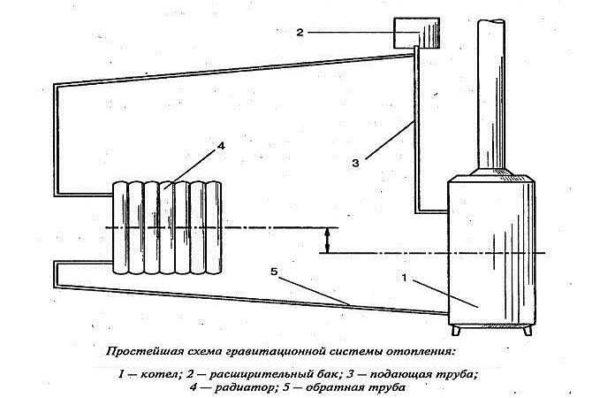
There are more minuses:
- Pipes must be used with a larger diameter – the speed of movement of the coolant is small, so to carry enough heat requires a larger volume of coolant. lay them with a constant not insignificant slope (about 3%), which does not add aesthetics to the room.
- In the case of natural circulation, the pipes are located at a height of about a meter, which is not beautiful for the room. The second option is an acceleration loop, which is also not very attractive. The situation is better with two-storey houses. In them, the second floor is a kind of accelerating loop.
- The boiler is also required energy-independent, and this is a solid fuel boiler on wood or coal. All others require a power supply.
- The middle of the radiators should be higher than the middle of the boiler (to allow circulation). If the house does not have a basement, you have to either scuff up the radiators or make a recess for the boiler. Not a fun task either.
- Impossibility to regulate the speed of movement of the coolant and the thermal regime in the room.
In systems with forced circulation is built in circulation pump. It does not create excessive pressure, just drives water through the pipes at a given speed. Such a pump can be built into the boiler (gas heating units) or installed separately on the return pipe before entering the boiler.
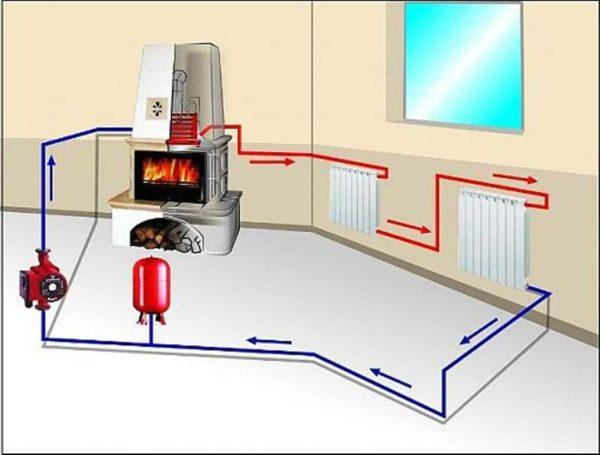
Pros of such a solution:
- Pipes are laid down – on the floor or under the floor.
- The speed of movement of the coolant can be regulated (multi-speed pump), thus regulating the temperature in the room.
- The diameter of the pipes is small. For a medium-sized private house it is usually 20 mm or so.
- Any boiler can be installed, with any automation. Automation provides a higher level of comfort and the ability to accurately maintain the desired temperature.
The disadvantage is the need for electricity. And it is not that it requires a lot, just the opposite, the system consumes 100-250 W / h like a normal light bulb. The fact is that without electricity it is inoperable. For rare cases of disconnection, a power stabilizer with a battery is suitable, and if the power is still disconnected often, you need a backup source – a generator.
By type of wiring
There are two types of systems:
- one-pipe;
- two-pipe.
One-pipe systems
In single-pipe from the boiler, a pipe comes out of the boiler, sequentially bypasses all the radiators of heating, and from the output of the last one gets to the entrance of the boiler. The main advantage is the minimum number of pipes. The disadvantages of such a device for heating a private house are more:
Better in this respect is an improved system – Leningradka. In it, each radiator has a bypass – a section of pipe connected in parallel to the heater. In this variant on the input and output of radiators it is possible to put ball valves, with the help of which it is possible to disconnect radiators. The heat carrier in this case will move through the bypass.
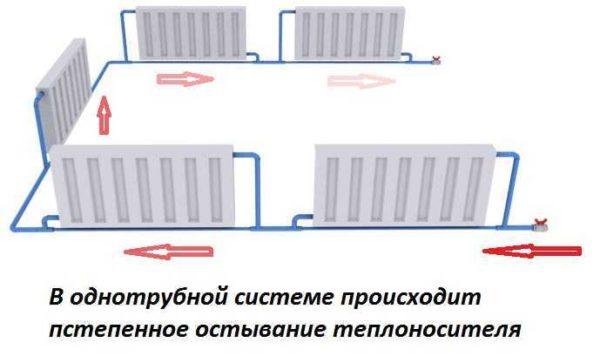
Two-pipe distribution
In this system there are two pipes, to which radiators are connected in parallel. One pipe is used to supply hot coolant, the other pipe is used to discharge the cooled coolant.
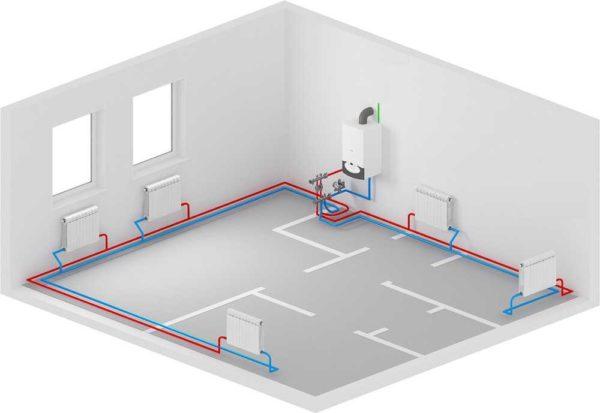
Minuses – high consumption of pipes, but at the entrance of each radiator water is supplied at the same temperature, there is a possibility of installing a regulator on each of their heating devices, so that the system can be balanced (to set the required heat output for each radiator).
There are several varieties of two-pipe heating systems:
- Dead-end. For its device requires the smallest number of pipes, but its disadvantage – with a large length of the contour of the last radiators are located far from the boiler, which complicates balancing (they can be worse warmed). Because the heating of a private house on such a scheme do, if the contour of a small length – up to 6-7 radiators.
- With cross traffic or Tichelman. Requires a large number of pipes, which are not very pleasing to the eye, but the scheme is easily balanced. With long circuits, it is better to use this type of wiring.
- Radial or collector. Requires the most pipes, and even a separate collector, which makes it self expensive. To each device goes a separate supply and return line. A good system is that you can independently set the heat output of each radiator, without paying attention to those that are next to each other.
How to choose polypropylene pipes read here.
According to the method of supplying the coolant
There are systems with upper and lower supply of the coolant. All the schemes above – with lower distribution. Systems with upper supply in are rare. Mainly realized in two (and more) storey houses for more economical construction of the system.
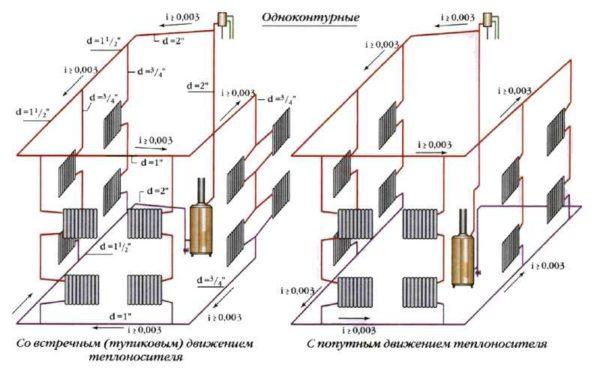
According to the type of system: open and closed.
As the temperature of the coolant in the system changes, so does its volume. In order to have a place to store the excess, expansion tanks are installed in the system. These tanks are open (conventional tanks) and closed (membrane tanks). Accordingly, the systems are called open and closed.
In the open expansion tank is usually put in the attic of a private house. It is certainly cheap, but in such a system there is a gradual evaporation of the coolant. Therefore, the amount of liquid must be monitored or make an automatic device that will respond to the lowering of the level. Usually it is a float mechanism (as in a toilet bowl), which opens/closes the water supply. The system is simple and quite reliable, but only water can circulate in it. You can’t pour antifreeze into it, as it is not allowed to change its concentration (and when it evaporates, it does). In addition, most of the antifreezes are toxic and their vapors are also not curative.
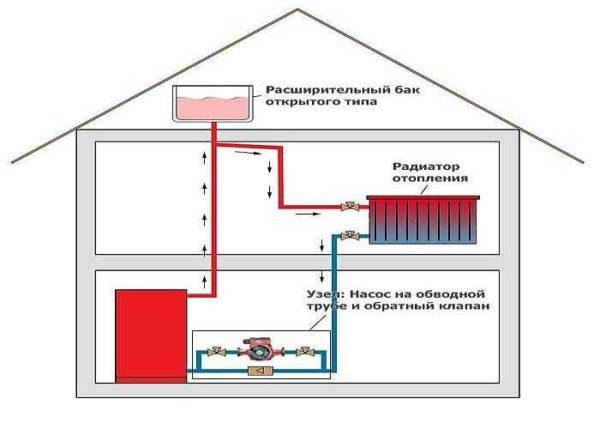
Where such tanks can be used, it is in systems with natural circulation – membrane at such a small pressure will simply not work.
The expansion tank of the closed type is divided into two halves by an elastic membrane. When there is a lack of coolant, it displaces it from the tank; when there is an excess (pressure increases), the coolant stretches the membrane, occupying a larger volume.
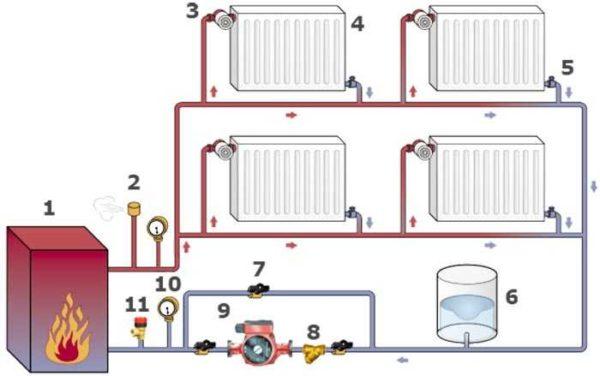
These systems work well with forced circulation, maintaining a stable pressure.

